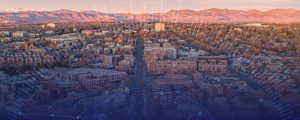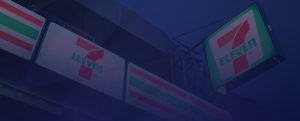Denver Retail Market Report
Denver Market Overview
The Denver MSA spans seven counties along the Front Range of Colorado and has nearly three million residents. Over the past decade, the region’s population has increased by 10.9%, surpassing the national average of 5.5%. Projections indicate a slower, yet steady, growth rate for the next decade. Denver stands out as a center for job creation thanks to its highly educated workforce, a well-connected airport with global reach, and a favorable tax environment. It hosts 10 Fortune 500 companies, including Arrow Electronics, DISH Network, and DaVita.
Downtown Denver Submarket Performance
By the Numbers
- Deliveries (SF): 0
- Net absorption (SF): 38.5K
- Vacancy rate: 8.1%
- Rent growth: 2.1%
- Sales volume: $10.9M
Last 12 Months | Source: CoStar Group
The revival of Denver’s 16th Street Mall has been a cornerstone in the city’s retail and commercial real estate. Attracting a mix of national and local retailers, the mall brings more foot traffic and a much-anticipated vibrancy to Downtown Denver. The influx of shoppers has spurred new demand for office spaces and residential development in the surrounding areas. While downtown retail has faced challenges, including persistent high inflation, increasing consumer debt, and a high-interest rate environment, 16th Street has helped counter those and keep the downtown retail market optimistic.
With an availability rate of 11.8%, downtown has the highest vacancy rate among Denver’s submarkets. Annual rents have risen by 2.1%, averaging $34.00 per square foot. However, rental performance varies widely across the submarket. Retail properties in the western part, particularly around LoDo, are experiencing growth, while those in the eastern CBD core are seeing rent declines. Vintage office buildings characterize this Downtown area and are the focus of ongoing discussions among city officials and real estate experts regarding revitalization and potential conversions.
Downtown Denver Sales
Three sales in the last year totaled $9.3 million in volume and covered 50,000 square feet of space. These transactions have averaged $150 per square foot, below the estimated submarket rate of $329 per square foot. In the preceding year, the price per square foot ranged from a high of $527 to a low of $150. Over the past three years, Downtown has seen an average of 19 sales annually, with a volume of $61.6 million and 170,000 square feet of space changing hands each year.
Central Denver Submarket Performance
By the Numbers
- Deliveries (SF): 117K
- Net absorption (SF): 216K
- Vacancy rate: 3.6%
- Rent growth: 1.8%
- Sales volume: $65.6M
Last 12 Months | Source: CoStar Group
Retailers in the Central submarket benefit from access to some of Denver’s rapidly expanding neighborhoods. Central Park has emerged as the most sought-after destination for young families in Denver, while the adjacent Lowry neighborhood offers a quiet residential setting just a short 10-minute drive from downtown, appealing to families and young professionals alike. Key industries like healthcare, aerospace, and bioscience fuel employment growth in this area. The submarket’s attractiveness to retailers stems from its favorable demographics and robust growth, bolstered by its proximity to Denver’s highly desirable neighborhoods.
Despite concerns about a weakening economy and slower population growth in Denver, the Central retail submarket maintains its strength due to its notably low availability rate, limited new construction, and a resilient consumer base.
Vacancies in the submarket have remained relatively stable in recent years, currently standing at 3.7%, in alignment with the metro-wide benchmark of 3.7%. Despite the submarket’s size, there have been modest additions to supply, and the current pipeline is limited, with only 110,000 square feet under construction. Triple net asking rents in Central Denver have reached a historic peak at $26.00 per square foot, marking a 1.8% increase over the past 12 months.
Central Denver Sales
Over the last five years, the yearly sales volume has averaged $191 million. In the past year, the recorded transaction volume amounted to $62.7 million, primarily propelled by general retail sales.
Cherry Creek Submarket Performance
By the Numbers
- Deliveries (SF): 3.7K
- Net absorption (SF): 19.7K
- Vacancy rate: 2.1%
- Rent growth: 2.2%
- Sales volume: $11.4M
Last 12 Months | Source: CoStar Group
The Cherry Creek submarket remains robust, with a historically low retail availability rate of just 3.0% and minimal competition from other available spaces. Meanwhile, there’s limited development activity in the pipeline. The surge in multifamily construction in Denver is leading to removing outdated retail structures, especially in dense zones like Cherry Creek, where high land values make redevelopment financially viable.
Cherry Creek, renowned for its upscale character, is poised for substantial transformation in the upcoming years. Already an attractive area filled with luxury offices, apartments, and retail establishments, developers are planning ambitious projects to elevate the neighborhood further.
Introducing luxury multifamily complexes and premium office spaces has significantly bolstered retail rents. At $47.00 per square foot, average rents in the area are nearly double the Denver market average, reflecting the location’s premium status.
Cherry Creek Sales
There have been three sales in the past year that totaled $11.9 million in volume and covered 10,000 square feet of space. These transactions averaged $521 per square foot, surpassing the estimated submarket price of $369 per square foot. During this period, the trailing one-year price per square foot ranged from a high of $537 to a low of $369. Over the past three years, there has been an average of 13 sales annually in Cherry Creek, with a volume of $43.4 million and 130,000 square feet of space changing hands each year.









